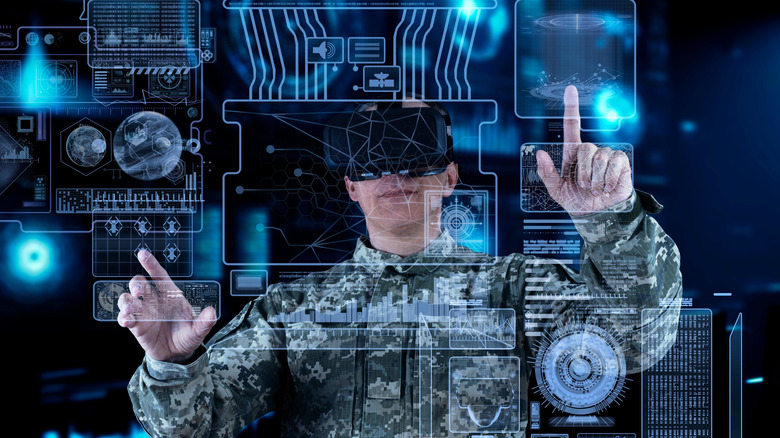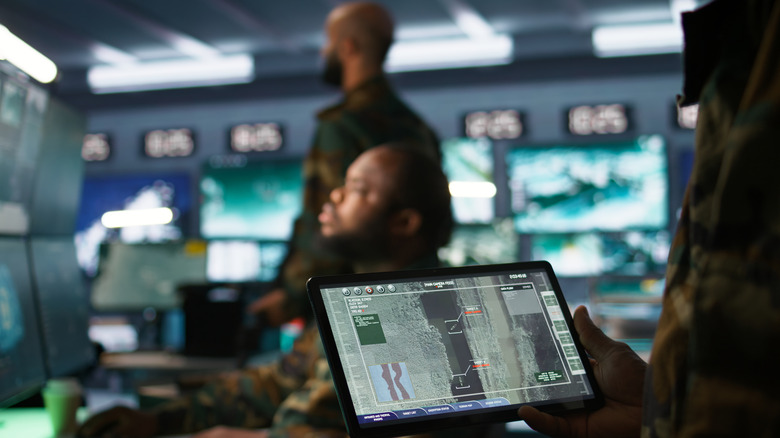What Is A Military Cyber Command And What Does It Do?
From spears and swords to the advent of firearms, warfare has evolved as a result of continuous technological developments in communication, transportation, and weaponry. As a direct result of these advancements, warfare has become more precise and lethal, and now includes cyberspace as one of its main battlefronts. Cyberwarfare signifies a change in the way wars are fought, moving from the conventional physical sphere to the digital one, and becoming a new and important area of military operations. To meet the challenges of this new front, many nations have established cyberwarfare specialist branches in their armed forces. In the United States, this branch is called Cyber Command.
Faced with the increasing significance and susceptibility of cyberspace to national security, the United States created the U.S. Cyber Command (USCYBERCOM) in 2009. The primary purpose of the new military branch is to protect vital infrastructure from different types of cyberattacks, detect significant cyber threats, enhance cyber capabilities, and coordinate cyber operations. For operations that impact other branches of the military, Cyber Command provides guaranteed decision dominance and freedom of action for friendly forces throughout the cyber domain and the information dimension, while denying the same to adversaries.
U.S. Cyber Command works by supporting larger national cybersecurity initiatives, facilitating military operations in cyberspace, and providing defense for the Department of Defense networks. The Cyber Mission Force acts as the action arm for Cyber Command and is tasked with supervising, coordinating, and synchronizing cyberspace operations to protect American national interests. Cyber Mission Force is a structured organization that is composed of 135 different groups, including Combat Support Teams, Cyber Protection Teams, Cyber National Mission Teams, and Cyber Combat Mission Teams.
Safeguarding the nation against cyber threats
The Cyber Command nerve center can be found at Fort George G. Meade in Maryland, alongside the National Security Agency (NSA), another entity that has a significant role in cybersecurity. The NSA provides vital cyber intelligence and protection for American national security systems, especially those associated with the Defense Industrial Base, and creates cybersecurity services and systems for the American government. The locational proximity of both organizations' headquarters reflects how the U.S. Cyber Command and NSA work together in several key areas, including homeland defense, combating foreign aggressors, and assisting allied, private, and federal partners.
At a global level, cyberattacks are used for several strategic purposes, including espionage, disruption of critical infrastructure, and political influence. These attacks are used for both offensive and defensive reasons and employed to gain a competitive advantage or cause harm. Some of the worst data breaches in internet history have been linked to state-sponsored groups, which underscores the critical function of the U.S. Cyber Command in safeguarding national and public safety by raising awareness of cybersecurity and working with the private sector.
With the ever-evolving cyber landscape and the sophistication of cyberattacks, including a coordinated global cyberattack on various U.S. agencies, the role of the United States Cyber Command becomes even more critical. Most recently, the military concluded its annual training exercise for 2025 called Cyber Guard 25-2, which simulated real-world threats and showcased the coordinated defense capabilities of the various government and military units. Additionally, the leadership of the U.S. Cyber Command has recently recommended the creation of a new facility called the Cyber Innovation Warfare Center that will utilize AI for training, management, and development for its cyber workforce.

